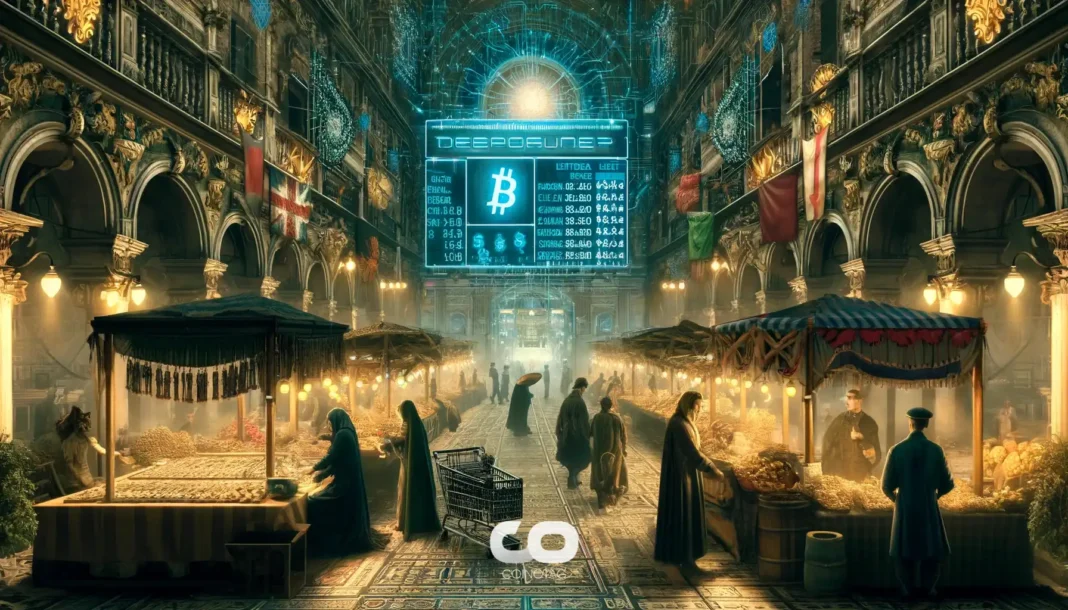| COINOTAG recommends • Exchange signup |
| 💹 Trade with pro tools |
| Fast execution, robust charts, clean risk controls. |
| 👉 Open account → |
| COINOTAG recommends • Exchange signup |
| 🚀 Smooth orders, clear control |
| Advanced order types and market depth in one view. |
| 👉 Create account → |
| COINOTAG recommends • Exchange signup |
| 📈 Clarity in volatile markets |
| Plan entries & exits, manage positions with discipline. |
| 👉 Sign up → |
| COINOTAG recommends • Exchange signup |
| ⚡ Speed, depth, reliability |
| Execute confidently when timing matters. |
| 👉 Open account → |
| COINOTAG recommends • Exchange signup |
| 🧭 A focused workflow for traders |
| Alerts, watchlists, and a repeatable process. |
| 👉 Get started → |
| COINOTAG recommends • Exchange signup |
| ✅ Data‑driven decisions |
| Focus on process—not noise. |
| 👉 Sign up → |
-
The recent fallout from market maker activities has spotlighted potential issues within the crypto trading landscape, especially concerning retail investors.
-
The investigation into Web3port’s trading practices not only uncovers financial misconduct but also questions the regulatory oversight in the industry.
-
According to a report by COINOTAG, Binance’s actions highlight a growing tension between exchanges and market-making practices that might harm ordinary traders.
This article examines the Web3port controversy in crypto trading, revealing significant profits at the expense of retail investors and potential exchange complicity.
Market Makers: Essential Yet Controversial Players in Crypto
Market makers provide an essential function in the crypto ecosystem by ensuring high liquidity, enabling traders to buy or sell assets swiftly without impacting prices drastically. However, their practices have come under scrutiny as evidence suggests that some market makers may exploit their position to generate significant profits, creating risks for retail investors.
The debate continues as to whether market makers serve as stabilizing forces in the rapidly evolving crypto trading environment or if they engage in practices that prioritize profits over market integrity.
Implications of the Web3port Scandal
The Web3port scandal, which surfaced following significant profit claims, has raised serious questions about the role of market makers in protecting retail traders. Analysts highlight that profits reported by Web3port—amounting to an astonishing $38 million from just one project—indicate a troubling trend of financial manipulation.
| COINOTAG recommends • Professional traders group |
| 💎 Join a professional trading community |
| Work with senior traders, research‑backed setups, and risk‑first frameworks. |
| 👉 Join the group → |
| COINOTAG recommends • Professional traders group |
| 📊 Transparent performance, real process |
| Spot strategies with documented months of triple‑digit runs during strong trends; futures plans use defined R:R and sizing. |
| 👉 Get access → |
| COINOTAG recommends • Professional traders group |
| 🧭 Research → Plan → Execute |
| Daily levels, watchlists, and post‑trade reviews to build consistency. |
| 👉 Join now → |
| COINOTAG recommends • Professional traders group |
| 🛡️ Risk comes first |
| Sizing methods, invalidation rules, and R‑multiples baked into every plan. |
| 👉 Start today → |
| COINOTAG recommends • Professional traders group |
| 🧠 Learn the “why” behind each trade |
| Live breakdowns, playbooks, and framework‑first education. |
| 👉 Join the group → |
| COINOTAG recommends • Professional traders group |
| 🚀 Insider • APEX • INNER CIRCLE |
| Choose the depth you need—tools, coaching, and member rooms. |
| 👉 Explore tiers → |
“The crypto market has seen a heavy influence from market makers, often to the detriment of regular investors,” stated Jason Chen, a renowned analyst. This pattern of profit accumulation, especially at the expense of smaller players, prompts an urgent call for stricter regulations and transparency in trading practices.
Binance’s Response: Timely or Too Late?
Binance has been criticized for its delayed reaction to the Web3port findings. Despite identifying suspicious activity involving the market maker associated with Movement (MOVE), the exchange did not act until four months later. This delay brings into question the exchange’s commitment to protecting its users.
| COINOTAG recommends • Exchange signup |
| 📈 Clear interface, precise orders |
| Sharp entries & exits with actionable alerts. |
| 👉 Create free account → |
| COINOTAG recommends • Exchange signup |
| 🧠 Smarter tools. Better decisions. |
| Depth analytics and risk features in one view. |
| 👉 Sign up → |
| COINOTAG recommends • Exchange signup |
| 🎯 Take control of entries & exits |
| Set alerts, define stops, execute consistently. |
| 👉 Open account → |
| COINOTAG recommends • Exchange signup |
| 🛠️ From idea to execution |
| Turn setups into plans with practical order types. |
| 👉 Join now → |
| COINOTAG recommends • Exchange signup |
| 📋 Trade your plan |
| Watchlists and routing that support focus. |
| 👉 Get started → |
| COINOTAG recommends • Exchange signup |
| 📊 Precision without the noise |
| Data‑first workflows for active traders. |
| 👉 Sign up → |
Colin Wu’s comments underscore the need for accountability: “If Binance noticed the suspicious activities back in December, why did they wait so long to take action?” The apparent inaction may suggest not only regulatory complacency but also economic incentive to benefit from increased trading volume, regardless of the structures’ integrity.
Regulatory Framework and Future Outlook
Regulatory bodies are now more vigilant, following Binance’s past legal troubles which include a substantial settlement with the SEC over alleged market manipulations. With pressures mounting for transparency, the actions against Web3port could signify a broader shift towards holding market makers to higher standards of accountability.
| COINOTAG recommends • Traders club |
| ⚡ Futures with discipline |
| Defined R:R, pre‑set invalidation, execution checklists. |
| 👉 Join the club → |
| COINOTAG recommends • Traders club |
| 🎯 Spot strategies that compound |
| Momentum & accumulation frameworks managed with clear risk. |
| 👉 Get access → |
| COINOTAG recommends • Traders club |
| 🏛️ APEX tier for serious traders |
| Deep dives, analyst Q&A, and accountability sprints. |
| 👉 Explore APEX → |
| COINOTAG recommends • Traders club |
| 📈 Real‑time market structure |
| Key levels, liquidity zones, and actionable context. |
| 👉 Join now → |
| COINOTAG recommends • Traders club |
| 🔔 Smart alerts, not noise |
| Context‑rich notifications tied to plans and risk—never hype. |
| 👉 Get access → |
| COINOTAG recommends • Traders club |
| 🤝 Peer review & coaching |
| Hands‑on feedback that sharpens execution and risk control. |
| 👉 Join the club → |
It remains essential for exchanges to cultivate a fair trading environment. A balance must be sought, where market makers can operate effectively without undermining the trust and financial security of retail investors.
Conclusion
The Web3port controversy serves as a stark reminder of the complexities surrounding market-making in the crypto space. While these entities are vital for liquidity, their potential for exploitation poses serious risks to novice traders. Stricter regulations and increased transparency are crucial in fostering a healthier trading environment, ensuring that all market participants—especially retail investors—are treated equitably and fairly.
| COINOTAG recommends • Members‑only research |
| 📌 Curated setups, clearly explained |
| Entry, invalidation, targets, and R:R defined before execution. |
| 👉 Get access → |
| COINOTAG recommends • Members‑only research |
| 🧠 Data‑led decision making |
| Technical + flow + context synthesized into actionable plans. |
| 👉 Join now → |
| COINOTAG recommends • Members‑only research |
| 🧱 Consistency over hype |
| Repeatable rules, realistic expectations, and a calmer mindset. |
| 👉 Get access → |
| COINOTAG recommends • Members‑only research |
| 🕒 Patience is an edge |
| Wait for confirmation and manage risk with checklists. |
| 👉 Join now → |
| COINOTAG recommends • Members‑only research |
| 💼 Professional mentorship |
| Guidance from seasoned traders and structured feedback loops. |
| 👉 Get access → |
| COINOTAG recommends • Members‑only research |
| 🧮 Track • Review • Improve |
| Documented PnL tracking and post‑mortems to accelerate learning. |
| 👉 Join now → |







